Today we’re bringing you the third and final installment in a 3-part series from Vikki Glinkskii, one half of The RV Project’s dynamic duo. The RV Project is Vikki’s and Spenser Tang-Smith’s adventure across America in search of the country’s best climbing and most interesting people. If you’ve been ignoring a nagging shoulder pain (or any pain, really), or if you’re a new climber, this post series is for you. You can find Part 1 here and Part 2 here. For exercises, skip to the bottom of this post.
I wish I could say it’s been smooth sailing since I found a good physical therapist. After seeing Dr. Giddings for a few months, we left Colorado to continue our life on the road. I had seen marked improvement—my muscles were less tight and the winging in my shoulder blades had gone down. I was beyond excited to head to Joe’s Valley, Utah for the first time to put ol’ lefty to the test.
My shoulder worked well in Joe’s and I was having a great time climbing. I kept doing my physical therapy exercises in my favorite flat dirt spot at our campsite. My body and I felt like we were finally on the same page and my shoulder pain was turning into a distant memory.
This was the end of 2012, so I had really only spent about six months dealing with my shoulder issues. We continued on the road, mostly bouldering, and I continued doing the shoulder exercises that Dr. Giddings had given me. I also began incorporating the (now-defunct) DPM workout article by Steve Edwards, One Workout Every Climber Should Do (ideally you’d do it once a week).
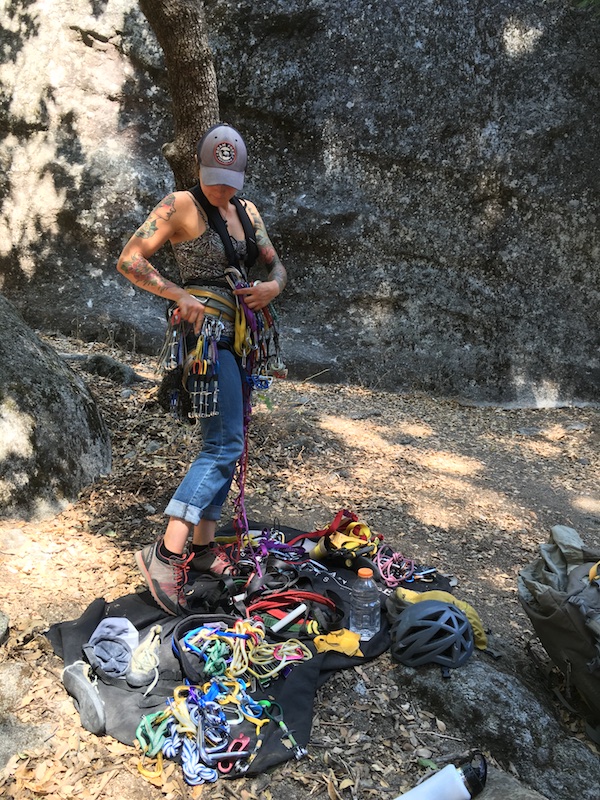
Throughout the following years, my shoulder had good days and bad days. Days that I was able to climb hard and strong, mixed in with days where I came out to the boulders to simply hang out because my shoulder felt weak or was in pain. I lacrosse balled and foam rolled daily, but we were traveling while trying to run a new business, so I did not prioritize seeing a therapist. It also felt like an extra expense instead of a necessity.
Fast forward to Fall 2016 when I headed to Yosemite to learn how to big wall climb. I could do almost everything, though I felt limited by my shoulder. Sure, I was able to climb a lot and I was able to carry a heavy pack and haul, but not consistently pain-free. That nagging gut feeling came back—there was a deeper issue that I was avoiding. I also finally came to the realization that my shoulder was holding me back in more than just my climbing—it would hurt to lift my computer pack, hold my camera, or even sometimes if just turned it the wrong way. My time in Yosemite solidified big goals, ones that I needed healthy shoulders to accomplish.
That winter, I knew we would be based in Santa Barbara for at least three months, so I decided it was time to face my shoulder issues head on. I started seeing a climber-recommended physical therapist there in October.
The verdict was that I still had a muscular imbalance—my rhomboids and lower traps were still very weak. The new piece of the pain puzzle was my chest. The left side of my chest, specifically the area underneath my collar bone, was—wait for it—tight. Although I had started lacrosse balling my pec area after a session with Mike Papciak where he mentioned that area felt tighter than the rest, I still mainly focused on my back.
My first few weeks back in PT consisted of manual release therapy with a focus on release of my chest muscles. This was a significantly more painful process than the dry needle therapy I had done in Colorado back in 2012. My chest was incredibly sore for ten days, and I would often wake up in the middle of the night from the pain of having rolled onto my side. It essentially forced me to sleep on my back (best for you, anyway) and to keep better posture, because any time I closed my chest by rolling my shoulders forward, the pain would remind me to keep my shoulders back.
So what now?
Since I ignored and compounded my issues for years, it’s going to be a long process until I’m back to climbing what I want. And maybe an even more important realization was that this is a forever process. If I want to stay active, I’m going to be lacrosse balling, foam rolling, and strength training as much as possible—period. Currently, I’m massaging myself with a lacrosse ball every day, still focusing on the chest area. I’ve ramped up my strength training, and I’ve added hangs on climbing holds and hangboarding to my workout.
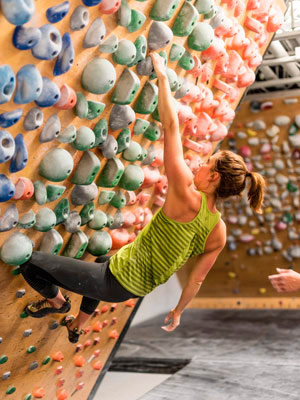
The two most helpful changes I’ve made recently are: learning to hang properly while climbing, and adding strength training to my workouts.
(Salt Lake City-based physical therapist Esther Smith wrote a fantastic post that describes how to hang right while resting during climbing or hangboarding.)
Yesterday, I went climbing for the first time in over four months. I was nervous because I wasn’t confident my shoulder could handle it, but it had been feeling strong the past couple weeks…and it was my first time at Smith Rocks! I followed on a three-pitch 5.10c and got really pumped, but my shoulder did alright so I was pretty jazzed. Topping out in the dark as a full moon rose over the park reminded me why I was doing all this. And of course, a mandatory evening lacrosse ball session followed.
In the end, I’ve learned that it will always be a combination of issues and that there is no one-size-fits-all method. It’s never just the chest, neck, or hamstring—it’s probably your chest, neck, hamstrings, and don’t forget the tight glutes.
My best advice is to learn to listen to your body. I hesitate to write this because it feels cheesy and dismissive, but, ultimately, you are the only person that knows everything about how your body behaves. Your physical therapist, bodyworker, or psychic reader can’t catch it all. The more in tune with your body you are, the better climber you’ll be.
I hope these posts have been helpful! Feel free to send me a message on Facebook if you have any questions and I’ll do my best to answer them. Below I’ve listed the exercises that I was prescribed, plus helpful ones I have found through trial and error.
MOBILIZATION
For rehabbing tight pecs and preventing curvature of thoracic (upper) spine, aka climber’s hunch.
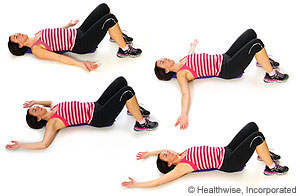
- Foam roller pec stretch (1-2 times per day): lay on the foam roller lengthwise and put arms out to the side while holding a 1-2 pound weight in each hand. Hold for a minute, or until arms have lost feeling, rest and repeat for 4 reps total. I do this with my arms out straight, shown in the top right of the picture; but play around with what feels good.
I then lay with the foam roller crosswise right at the bottom of my scapulae with my hips on the ground, forcing the thoracic spine back for at least minute.
- I’ll do the same as above with a double ball—I use two lacrosse balls taped together and it’s amazing.
- Deep neck flexor exercises have been helpful in relieving pain in the back of my neck (from belaying, working on the computer, looking at my cell phone…). I usually lay on the ground to do this (or in bed, first thing in the morning). Simply tuck your chin towards your neck. This will probably be a smaller movement than you think. The main objective is to not use your big neck muscles the run down either side of the front of your neck. You can roll a small towel and place it under your neck if it’s more comfortable.
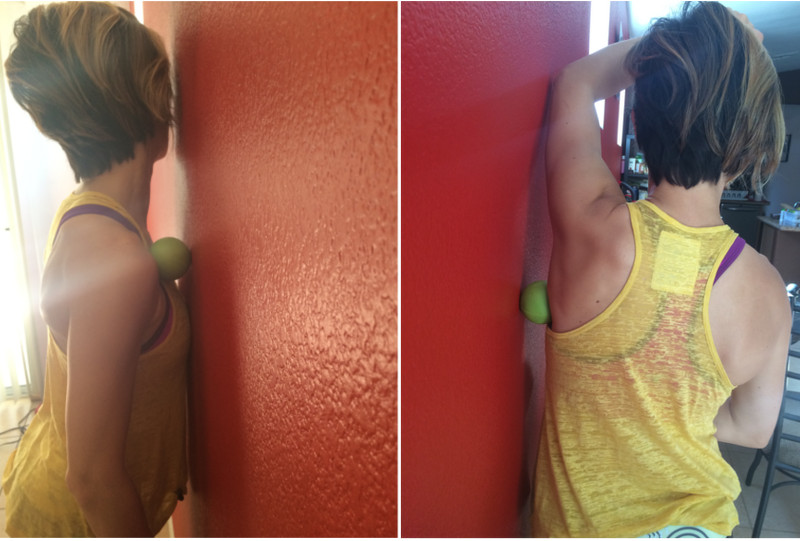
- Lacrosse ball to pec, rhomboids, and upper traps: Shoulder expert Dr. Natasha Barnes has a great post detailing this. Feel that knot between your scapulae? That impedes smooth movement of your shoulder blades and shoulders. The reality is that knot will probably never completely go away, but the goal is to make it as small and smooth as possible.
- Yoga: If you’re not doing it, you’re missing out on a lot of benefits. I really enjoy the teachings of Paisley Anne Close. She is a climber and incredibly well-versed in how to keep shoulders happy. A few of my favorite articles from her are One Pose Does it All (For Your Shoulders), Yoga Essentials for Climbers, and Building Strong Stable Shoulders (which also describes how shoulder instability and tightness can lead to major neck issues).
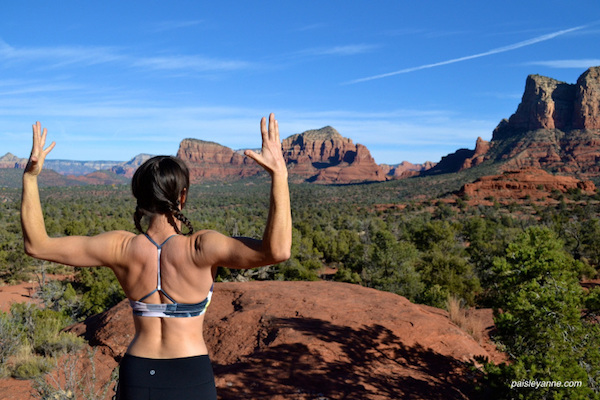
STRENGTH
For rehabbing scapular winging and building shoulder stability.
- Modified plange push-ups: 20 reps, 3 sets, 3 times per week. I couldn’t do a full push-up at first, so the modification is to start on the knees. Advance to full push-up when possible. Start in a push-up position and then push chest in towards the spine and hunch your back, as shown below, then come back down to the start of a push-up for each rep.
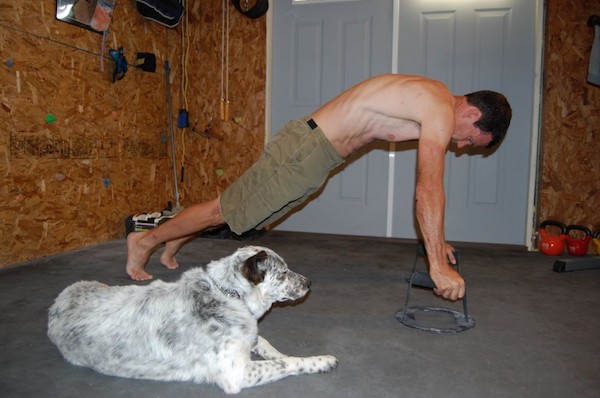
Above is what you should look like at the top of a plange push-up. I am doing a modified plange push-up on my knees for the moment, but the main goal is the same. This image is taken from that awesome article that everyone should read: The One Workout Every Climber Should Do by Steve Edwards.
- Ws, Ys, Ts: These are pretty basic and important shoulder exercises with a ton of variations. I’m currently doing standing Ys with 2-pound weights, but these can also be done laying down on the floor (with a towel roll under your head), on a bench, or on a stability ball. The choice is yours! The focus on all of these should be to contract your scapulae. Here are some other options, plus a cheesy 2008 video:
- Rows for the rhomboids (muscles between the scapulae): 2 sets of 15 reps with enough weight that you are as close to failure as possible at the end of each set. Again, there are a lot of options for these, but I am currently doing standing rows. Once more, focus on squeezing your shoulder blades together, holding them at the apex of the squeeze for a few seconds, and releasing slowly with control.
- Side-lying external and internal rotations for that rotator cuff: This muscle is almost always weak in climbers. Depending on where I’m at, I’ll do them side-lying or standing—2 sets of 15 reps with 3 pounds.
- Bottoms up dumbbell press: 2 sets, 15 reps with 8 to 10 pounds. Hold a dumbbell vertically in one hand and press up towards the sky, keeping your arms as stable as possible. This is my favorite, as it works the necessary back muscles well. A similar option, recommended by Bay Area shoulder expert Dr. Natasha Barnes, is the overhead press—you can check out her valuable article on this here. I’m planning to start doing the overhead press this week since I will have access to a gym.
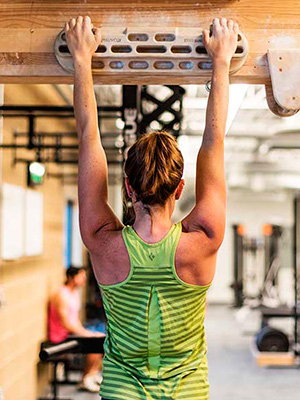
As soon as I could, I also incorporated climbing hangs using correct shoulder posture. I started with hanging on jugs on a vertical wall at the gym or outdoors. Progress to the hangboard (and add weights) when ready.
We hope this article series will keep you all healthy, uninjured, and crushing hard! Thanks to Vikki for passing along her extensive knowledge, and be sure to follow The RV Project on their next adventure.

